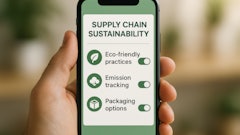
As we continue to move through 2023, the topic of sustainability continues to be a top of mind issue. Unprecedented wildfires, massive floods, and increasing temperatures and sea levels have understandably raised alarm bells regarding what the future holds for the environment. It has also forced certain industries to take a long, hard look at their own contributions to climate change and in some cases, re-strategize.
It’s no secret that the retail industry is a major contributor to CO2 emissions – in fact, according to an analysis by Business Insider, fashion production comprises 10% of total global carbon emissions. Much of this can be attributed to what is commonly known as “fast fashion,” which has actually been on the rise since the 1990s. Now, in 2023, fast fashion has seemingly taken over the retail industry, placing more pressure on stores like H&M, Forever 21, and Zara to produce at an incredibly fast pace just to stay relevant.
What many consumers may not realize is the incredible impact that fast fashion has on the environment. And who can blame them? Between advertising and social media, we as a society are constantly being fed content that forces us to feel like we need to keep consuming in order to keep up. To put this into perspective, Cloudwards reports that e-commerce revenue in the U.S. passed the $400 billion mark for the first time in 2020, reaching $431.6 billion; about a 20% increase from the total revenue in 2019, which was $360.1 billion. This in and of itself proves the sheer volume and rapid pace at which consumption is happening. And when you’re constantly thinking about your next purchase, you’re left with little to no time to get educated on how detrimental fast fashion really is.
So what can be done? We can’t always expect the shopper to fully understand the environmental impact of their choices, which means that in many cases, brands have to find more responsible ways to meet consumer demands. But this is easier said than done.
One of the best ways to create a more sustainable brand is by prioritizing a thoughtful inventory, thus avoiding excessive amounts of merchandise ending up in landfills. Between ever-changing consumer behavior, more fashion seasons, and an evolving economy, retailers need to be more precise than ever.
However, in order to do this, retailers need to have more visibility into their customers’ individual needs and how these customers engage in their stores. During the pandemic, many brands leaned on their online platforms to keep revenue flowing and some might say it changed the game in terms of data collection and visibility. When you shop online, the brand you’re buying from has a direct line of sight into what specific products consumers are gravitating toward. It even shows what colors, sizes, and styles are browsed more often, which gives retailers the ability to track what products tend to be returned more, or exchanged for another size. This helps keep them informed about what items their customers gravitate toward, and what items they need more or less of. But with consumers returning to shopping in-store, the visibility retailers once had and the data they were able to gather from online shoppers is falling to the wayside, making it almost impossible for retailers to carry an accurate amount of inventory.
Fortunately, technology is changing the industry for the better. Not only is it allowing us to achieve the same real-time visibility in-store that we get online, but it’s also making it possible to turn this visibility into usable data that ensures merchandise is being allocated correctly. This effectively avoids the issue of overstock and excessive waste. Understanding item availability, location, and performance gives room for merchandisers to change the way they manage processes like open to buys, store allocation, and visual merchandising, while also offering the ability to impact sell through without hurting margins at markdowns. In many ways, it’s a win-win. The retailer is able to make a positive environmental impact by avoiding excess merchandise ending up in landfills, and the customer doesn’t have to deal with the frustration of coming into a store only to find the item they want is sold out.
What retailers have in their stores should always reflect what consumers want, but it can be a struggle to ensure this when there is such a massive lack of data. By implementing technology that tracks customer behavior, retailers are empowered to make more strategic decisions about what they’re carrying and why. As the topic of climate change continues to dominate headlines, the retail industry is responsible for making changes to ensure they don’t continue being part of the problem.



















